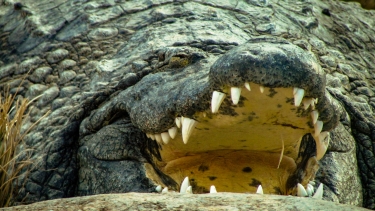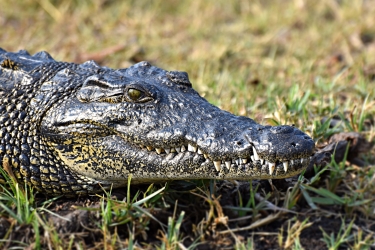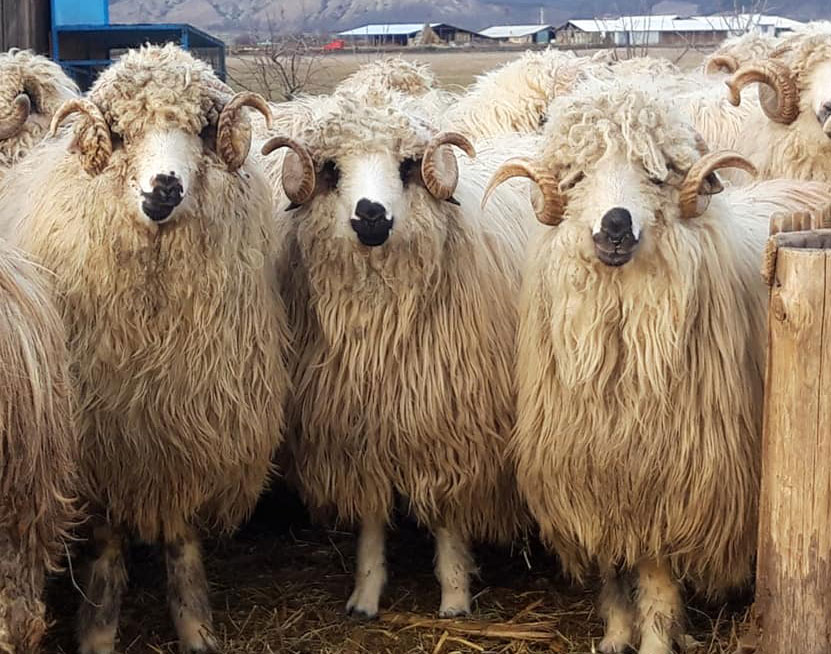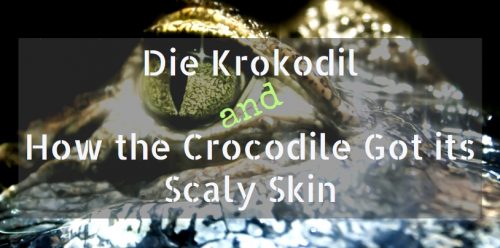Die Krokodil and How the Crocodile Got its Scaly Skin is the third story in die babadiertjies van Afrika, baby animals from Africa series you can enjoy here, on my blog.
Die Krokodil
Krokodile word in die lang, stil kuile van riviere en in die groot, tropiese mere aangetref.
Gedurende die droë seisoen lê die wyfie tussen vyf-en-twintig en ‘n honderd ovaalvormige eiers in ‘n holte in die grond. Hierdie eiers word deur die hitte van die son uitgebroei onder die immer wakende oog van die wyfiekrokodil. Kort voordat die eiers uitbroei, laat die klein krokodilletjies binne-in die doppe van hulle hoor. Met ‘n uitsonderlike kwaak-geluidjie begin die baba-krokodil met sy spesiale ‘eiertand’ sy weg na buite oopknaag. Hierdie ‘tand’, wat voor aan sy snoet sit, val af net nadat hy uit die dop gekruip het.
Onmiddellik nadat hy uit die dop is, begin hierdie jong diertjie groei. Die groeiproses is baie stadig, maar duur sy lewe lank voort. ‘n Ou krokodil kan tot selfs sewe meter lank wees, en nog steeds groei!
Daar bestaan ‘n besondere soort vriendskap tussen die krokodil en die klein renostervoë ltjie. Dié ou voëltjie sorg naamlik dat die ou krokodil se tande mooi skoon bly en hy sorg sommer terselfdertyd vir homself want hy eet al die stukkies kos en vleis wat daar vassit.

The Crocodile
If you love swimming, watch out for crocodiles are found in the long, quiet pits of rivers and in the large, tropical lakes.
During dry season the female crocodile lays between twenty-five and one hundred oval eggs in a cavity dug in the ground. These eggs are hatched by the heat of the sun under the ever-watching eye of the mother crocodile. Shortly before the eggs hatch, one can hear the small crocodiles moving inside their eggs. Making an exceptional croaking sound, the baby crocodile uses its special ‘egg tooth’ to gnaw its way out. This ‘tooth’, which sits in front of his snout, falls off just after he crawls out of the shell.
Immediately after emerging from the shell, the young crocodile begins to grow. The growth process is very slow, but continues throughout its life. An old crocodile can grow up to seven meters in length, and even longer!
There is a special kind of friendship between the crocodile and the little plover bird. This old bird makes sure that the old crocodile’s teeth stay clean and while doing this the bird takes care of herself too, by eating all the bits of food and meat that are stuck between the large crock’s teeth..

How the Crocodile Got Its Scaly Skin
At the beginning of time, the crocodile was not one of the chattiest animals, perhaps because so many asked him how come he lays eggs, yet he is not a bird? So the crocodile kept to himself, enjoying the water and the night, but mostly the mud. Which gave him a luscious, smooth golden skin. And it remained like this for the crocodile spent the hot days laying in muddy waters only to come out at night. When most animals slept.
Now, once word got out about the strange creature that was not a bird, yet could lay eggs, news spread like fire. And plenty of creatures came to look at the crocodile, as he lay in the mud, his skin glistening and looking smooth and golden. Inviting to touch. Yet non dared get close to that long, strong mouth lined with huge, sharp teeth.
So soon enough the crocodile forgot all about the nasty questions and felt quite proud of its smooth skin that no other animals seemed to have. Except maybe for the snake, but he is so thin, one can barely spot him. Unlike him! And crocodile started coming out of the water more and more during the day, and bask in the sun – or rather bask in the other animals’ admiration. And he did so even while the sun was at its hottest, for it was then, at midday, that the sun was shining the most. Making his skin glisten like a star fallen onto the earth. And crocodile soon began to forget how hurt he felt about being different because he could lay eggs yet not being a bird, and began thinking how much better he was. Better than any other animal, because of his skin. So he started ordering them around.
Now nobody enjoys a creature that shows no respect, no matter how beautiful it is. For it is the inside beauty that always shine through – or the inside nastiness. And soon the other African animals became bored with the crocodile’s change in personality and, with time, fewer and fewer showing up to admire his skin while listening to his bossy remarks.
And with each day that crocodile exposed his skin to the hot African sun, its one smooh and shiny coating would get sunburned, becoming uglier and bumpier and thicker. Until one day when it transformed into what looked like bulging armor.

It is said that the crocodile never quite recovered from the humiliating shame of having lost something as precious like his smooth and shiny skin, all due to his arrogance, and even today he will disappear from view when one approaches.
Only his eyes, ears (situated right behind) and nostrils surface above the water. For he still watches the visitors, hoping that someone still remembers his once beautiful skin.
(Retold by Patricia Furstenberg, 2001, All Rights Reserved. Based on a Namibian folktale)

